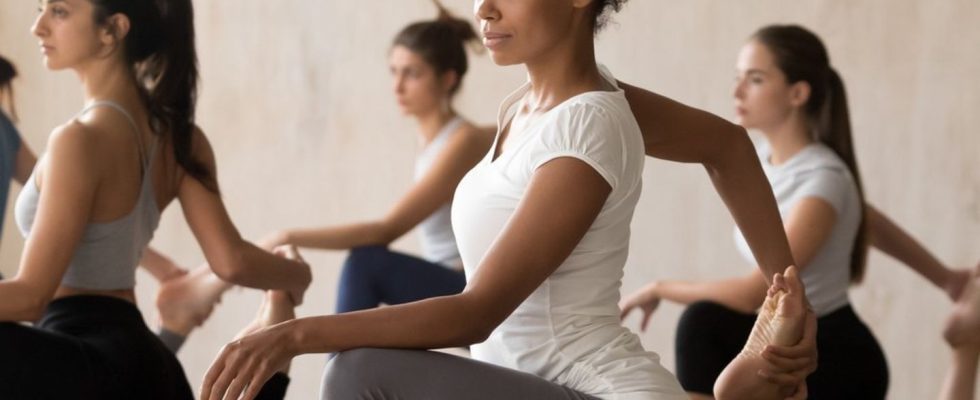From Ashtanga to Yin
Finding the perfect yoga style
Flexibility, relaxation or strength? The yoga practices have different benefits.
© fizkes/Shutterstock.com
Ashtanga, Hatha, Vinyasa – the range of yoga types is huge. This is how you find out which one suits you best.
Yoga is not just yoga. There are more types than letters in the alphabet. One provides relaxation, the next for flexibility and another for strength. Above all, yoga should do one thing: bring body, mind and soul into harmony. Since its birth around 3,500 years ago in India, the practice has undergone major changes and has also become mainstream in the western world in the last few decades. But with the different types, you can quickly lose perspective. Which type of yoga suits you is very individual and depends on your own needs. From Ashtanga to Jivamukti to Yin: an overview of the most popular types of yoga.
Hatha yoga
Hatha Yoga is the foundation of yoga and ideal for beginners. The term “Hatha” stands for physical yoga and has been used since the 14th century to distinguish the spiritual practices, called Raja Yoga, and the physical. Translated, “Hatha” means something like “violence” or “power”.
In hatha yoga, the asanas, the postures, are usually held for a long time and combined with breathing. So there is enough time for inexperienced yogis to do the positions correctly.
Vinyasa Yoga
Vinyasa Yoga is based on Hatha Yoga. In this direction, the asanas are performed fluently and in connection with the breath. For this, the basic positions should be in place so that the body moves in the flow. This type of yoga is perfect for those who like it dynamic.
Ashtanga yoga
Ashtanga Yoga is a modified form of Vinyasa Yoga. It is based on the teachings of the famous yoga scholar Sri Krishnamacharya (1888-1989). He developed six fixed asana series that build on each other and each consist of a fixed number of positions, each held for five breaths. A kind of choreography with a given breathing rhythm. Ashtanga Yoga is perfect for those who love effort and structure.
Jivamukti Yoga
Powerful, dynamic and sweaty: Jivamukti Yoga was developed in the USA in 1984 by Sharon Gannon and David Life. The exercises are practiced fluently and accompanied by music. The practice is not for those who shy away from contact: it is typical for the yoga teacher to correct his students with a lot of physical contact. Mantras and meditation are also part of the practice of Jivamukti, and during the practice ancient Indian scriptures are quoted. The Jivamukti teaching also attaches great importance to a non-violent and vegan lifestyle.
Bikram yoga
Bikram Yoga makes you sweat even faster than other types of yoga. Also known as “Hot Yoga” in this country, the room is heated to a temperature of between 38 and 40 degrees before the class begins. This method was developed by the Indian yoga master Bikram Choudhury. He has established a fixed sequence of 26 asanas and two breathing exercises. The heat has a particularly large effect on the elasticity of the muscles.
Yin yoga
Yin Yoga is suitable for everyone who likes it quiet and comfortable. This is a slow type of yoga in which the various asanas are initially held for one minute and later for more than five minutes. This practice is said to stimulate blood circulation in the body, improve flexibility and relax muscles. Yin Yoga is especially good as a relaxation method after more strenuous workouts.
Iyengar Yoga
For most types of yoga, all you really need is a mat and your body. Not so with Iyengar Yoga. This type was founded by the Indian yoga teacher BKS Iyengar (1918-2014) and incorporates objects such as chairs, cushions or blocks into the yoga sequences. Iyengar yoga is especially perfect for people who aren’t as stretchy or have physical problems because the “props,” as Iyengar calls them, increase the stretch without putting more strain on the body.
